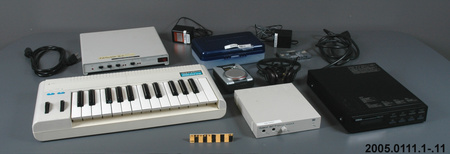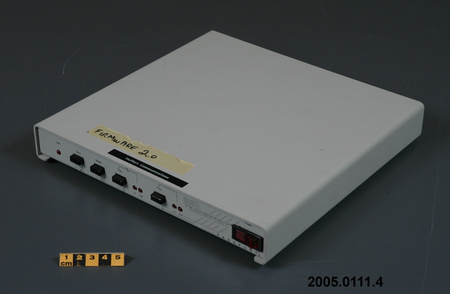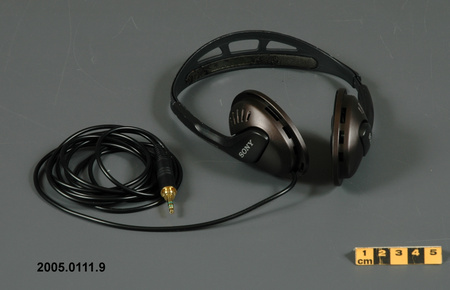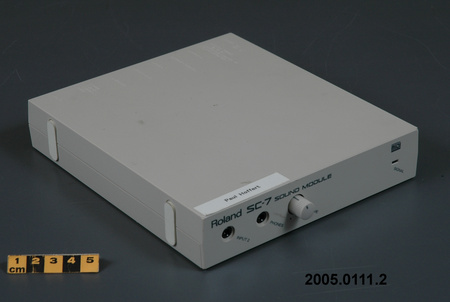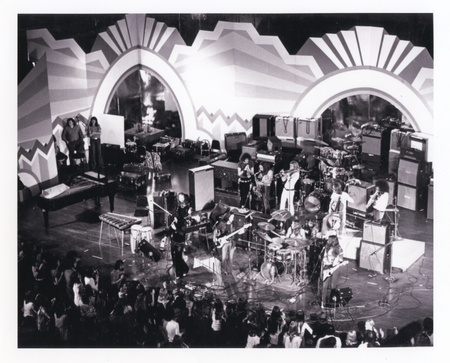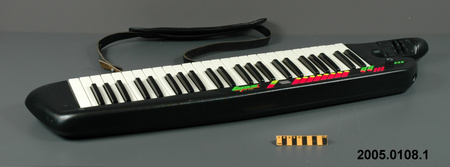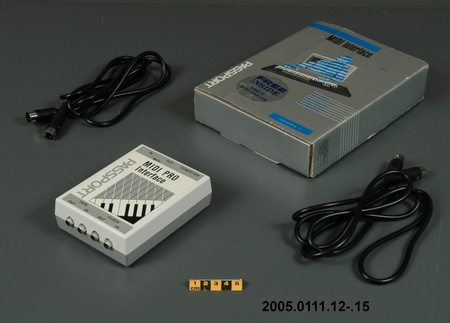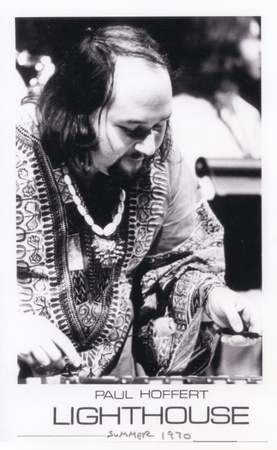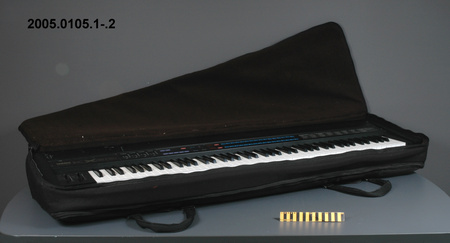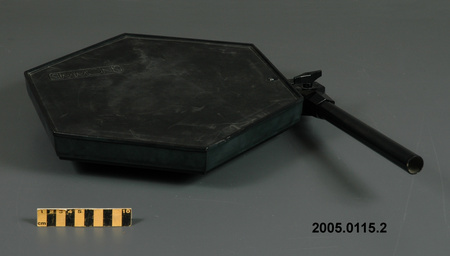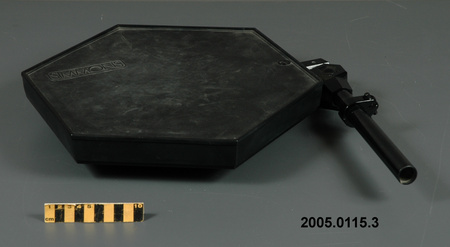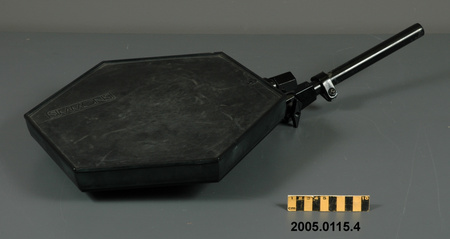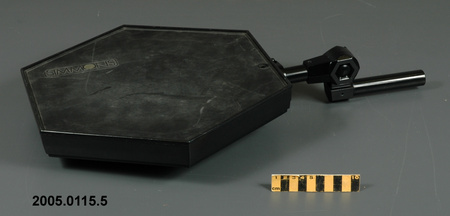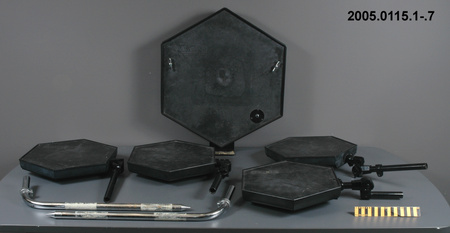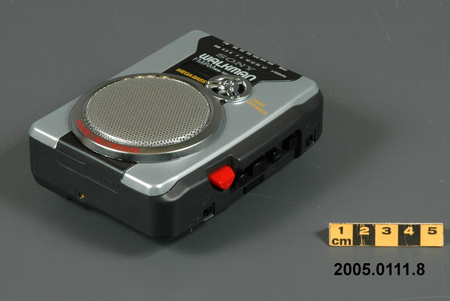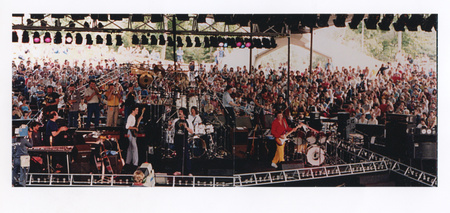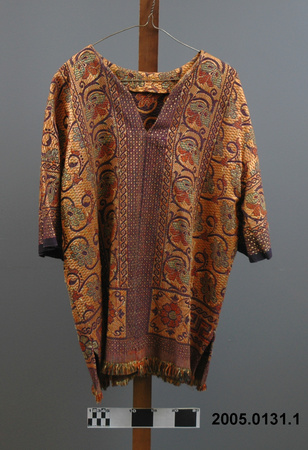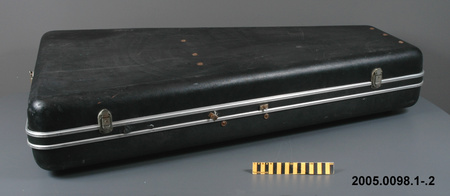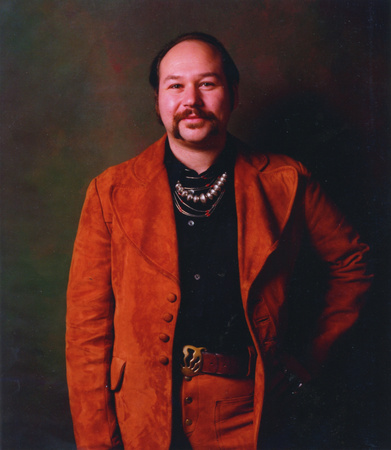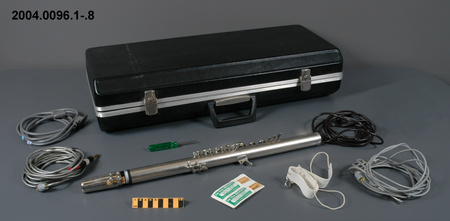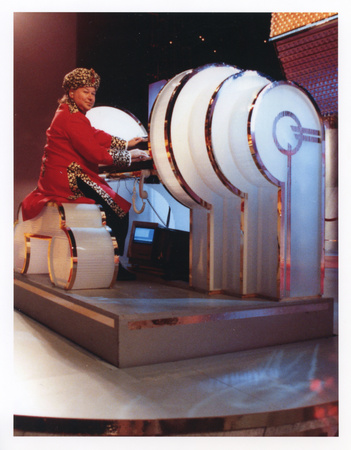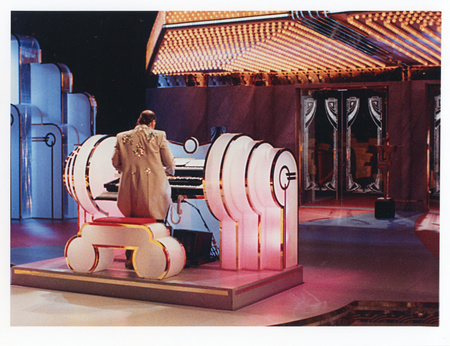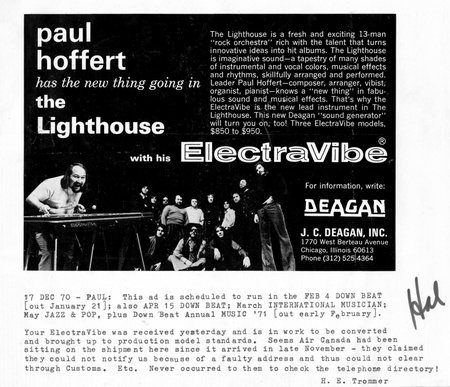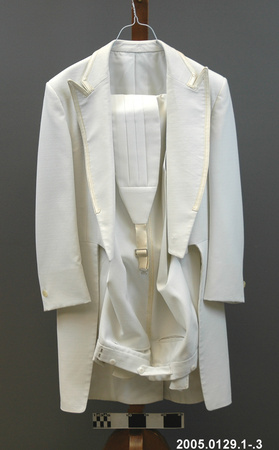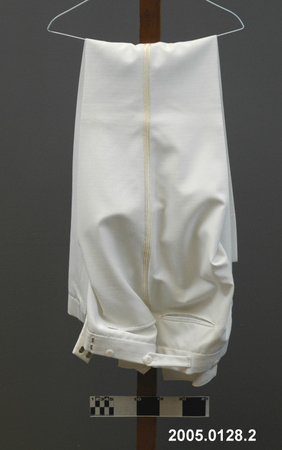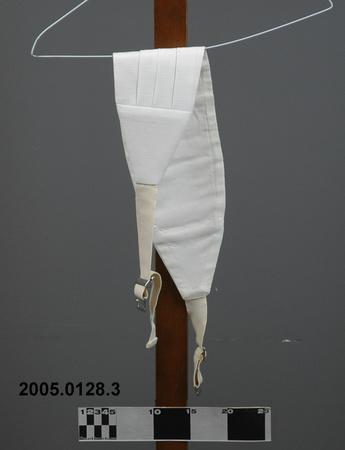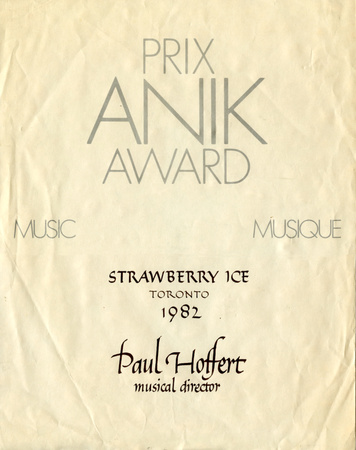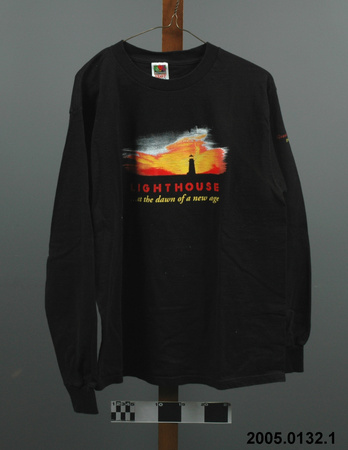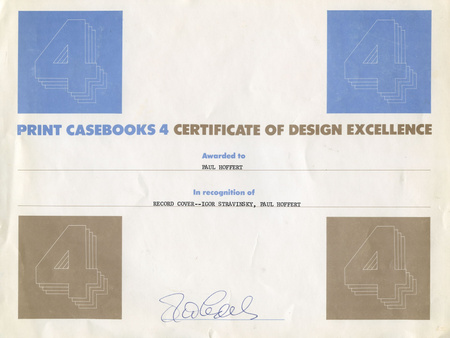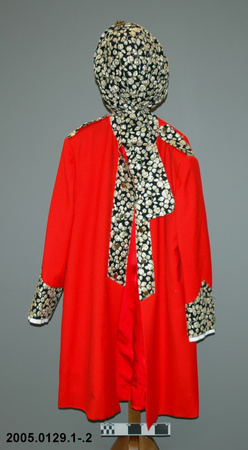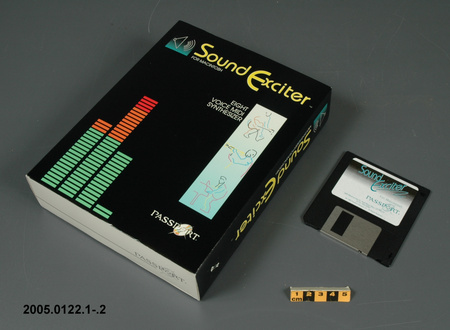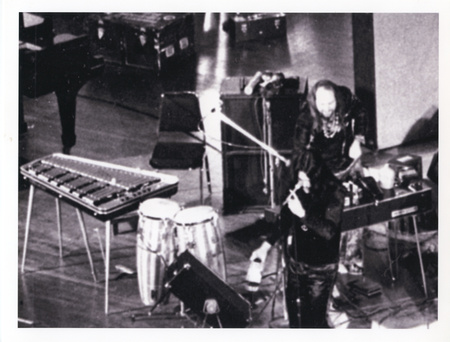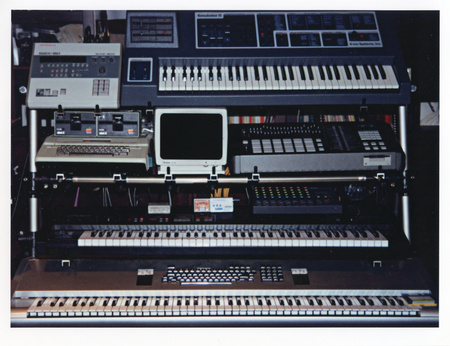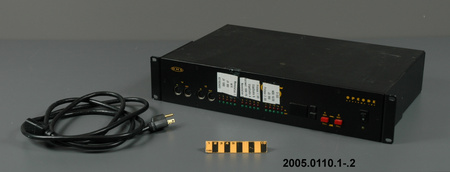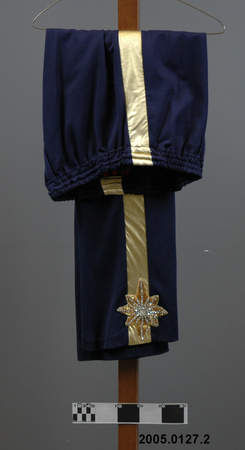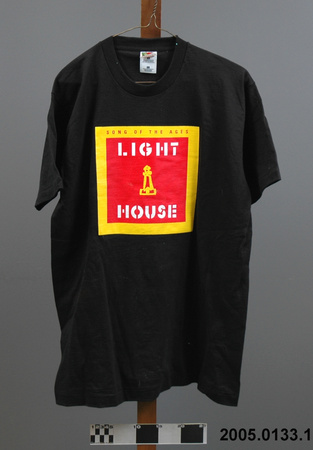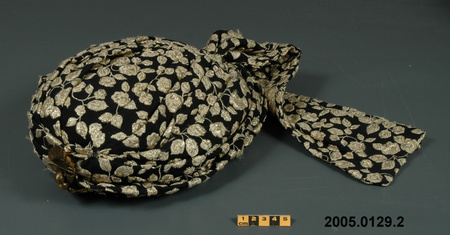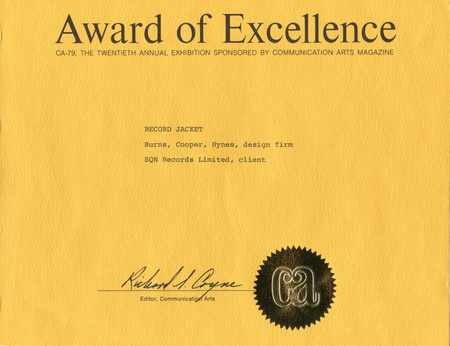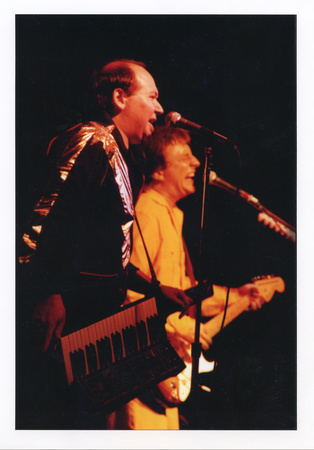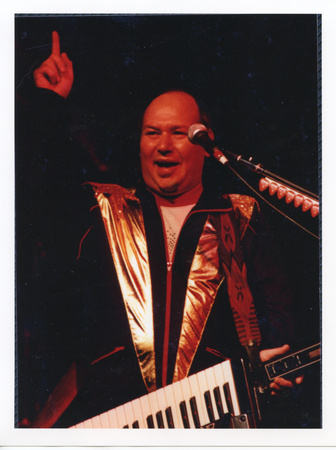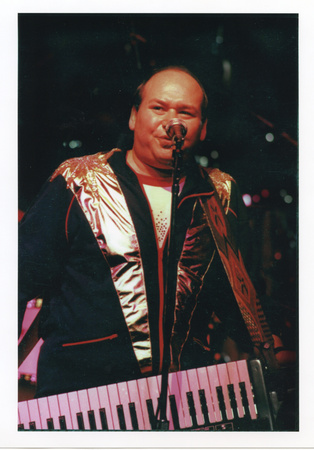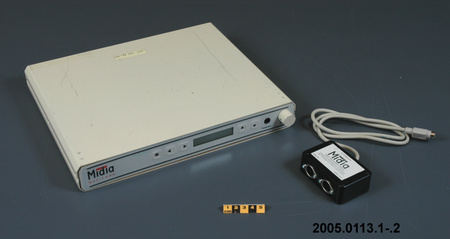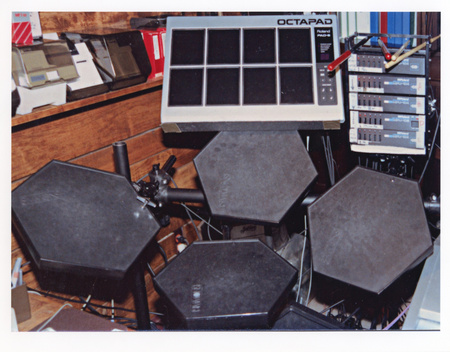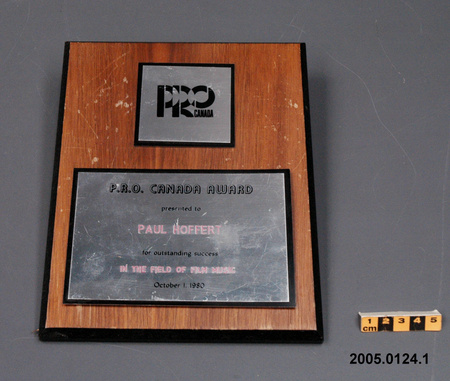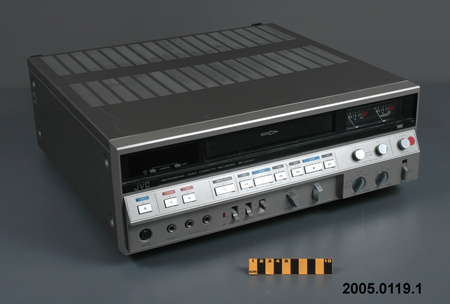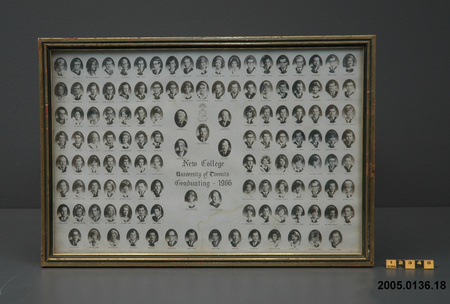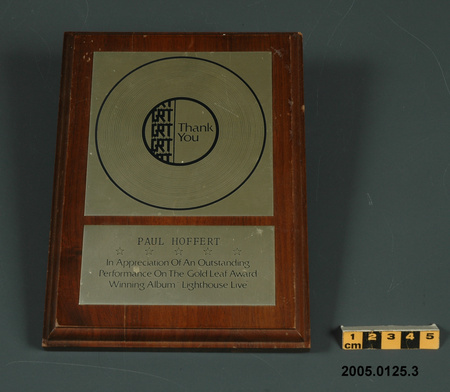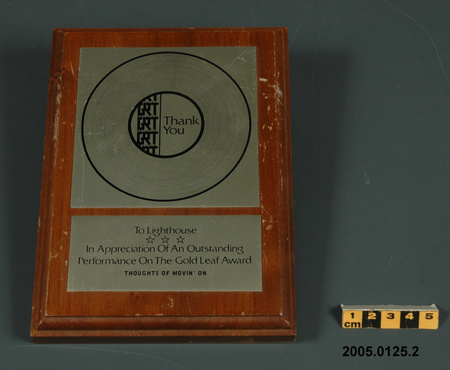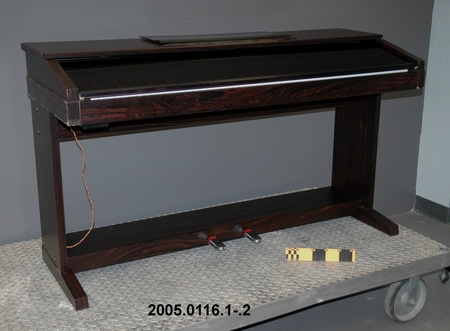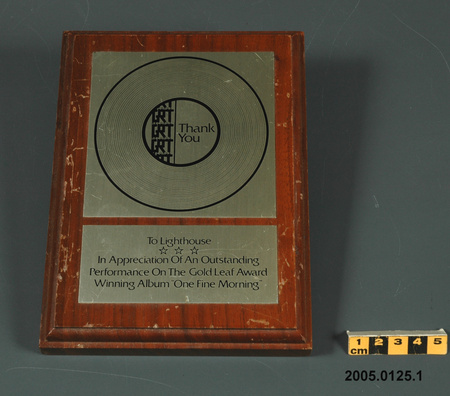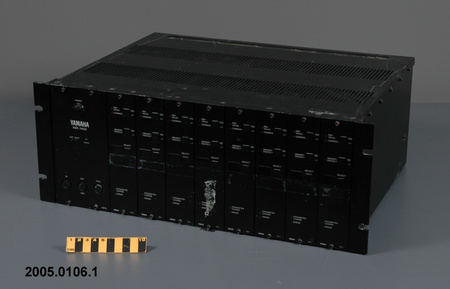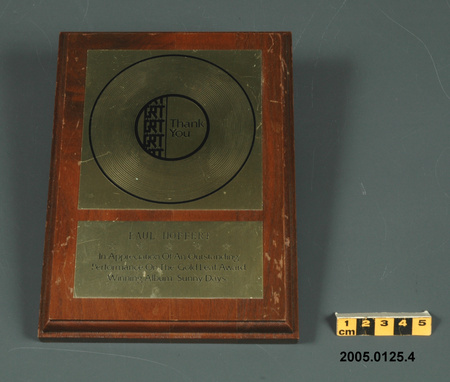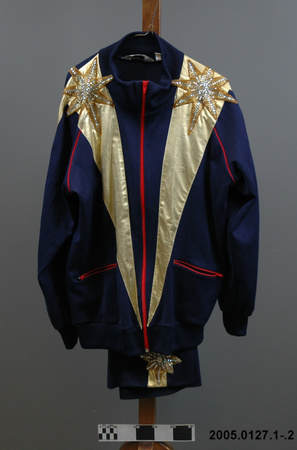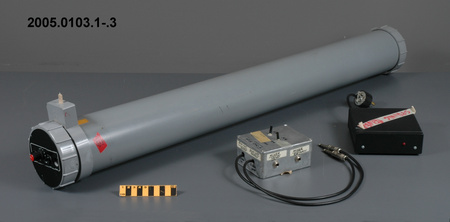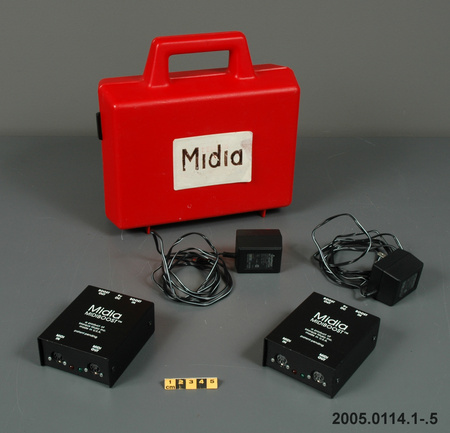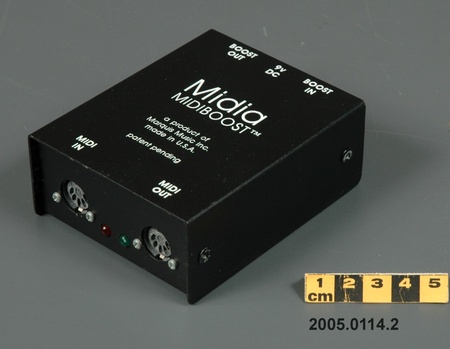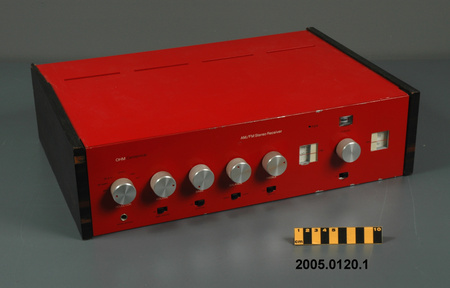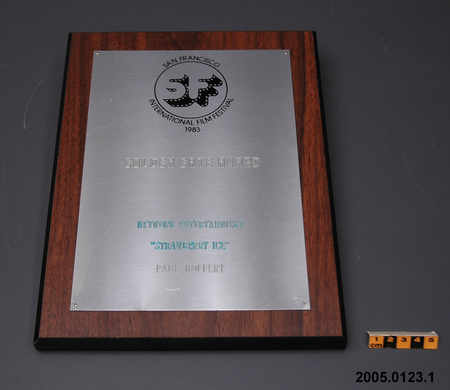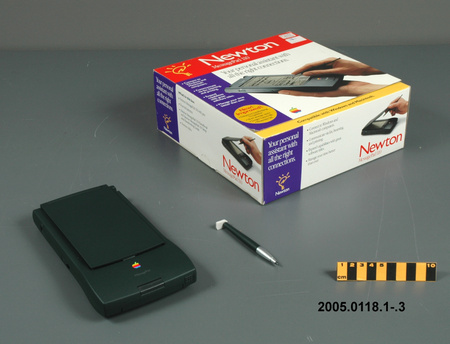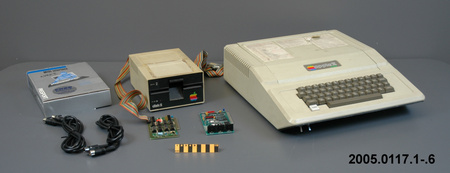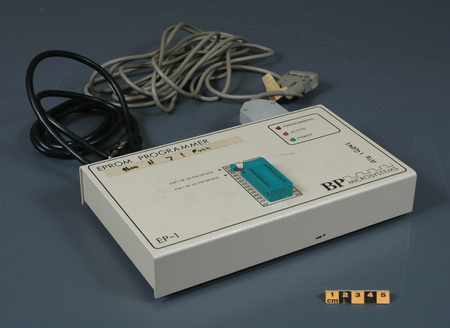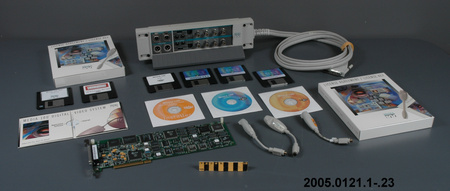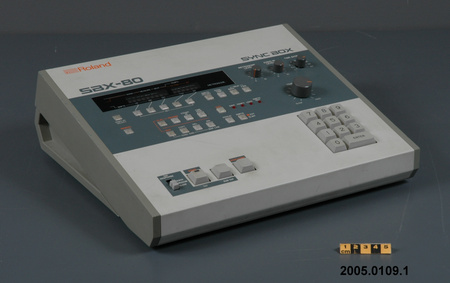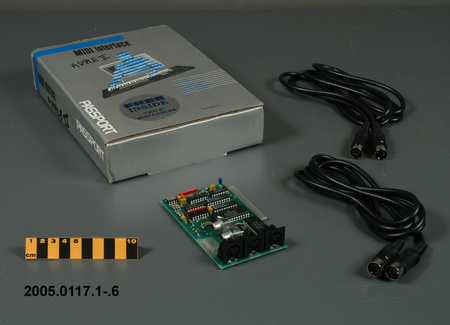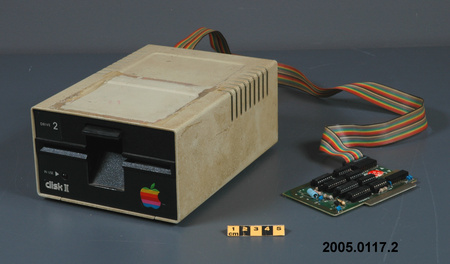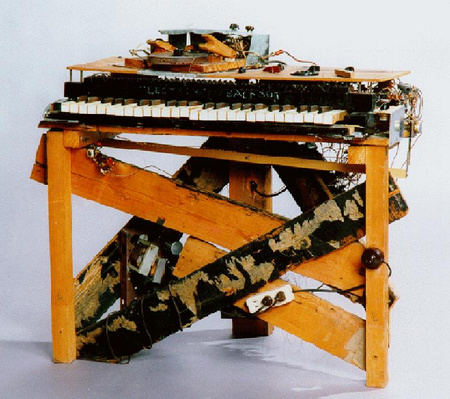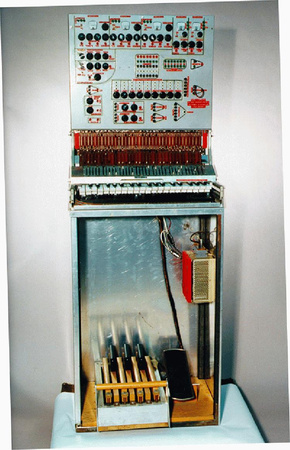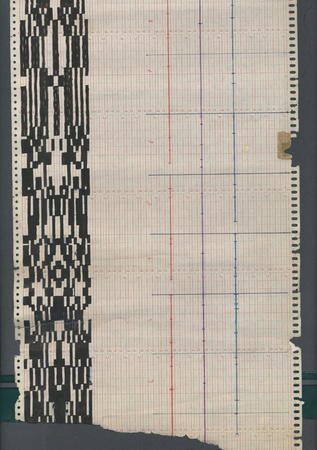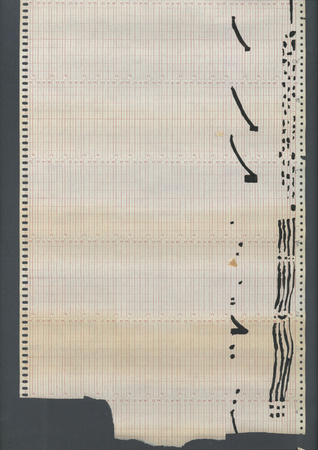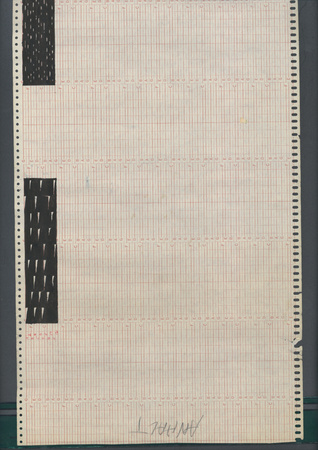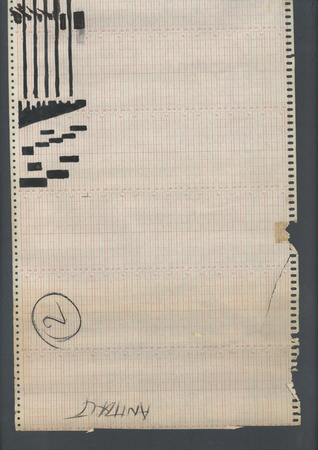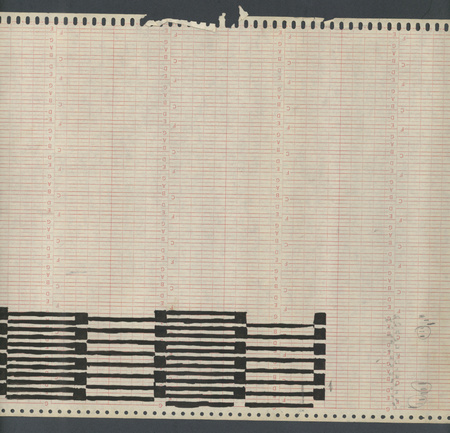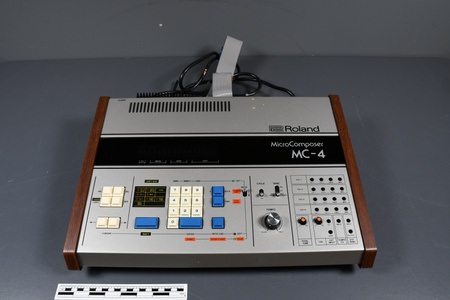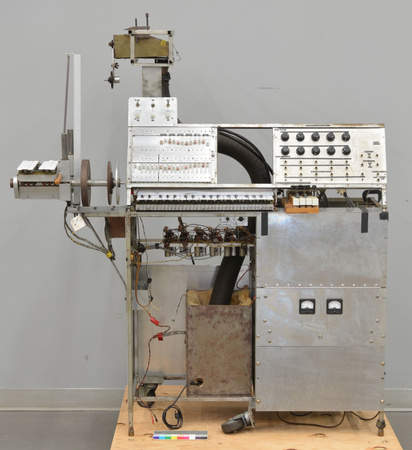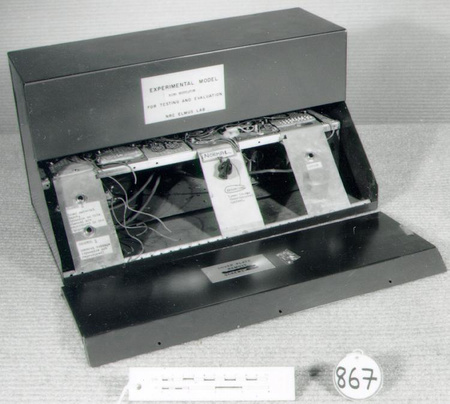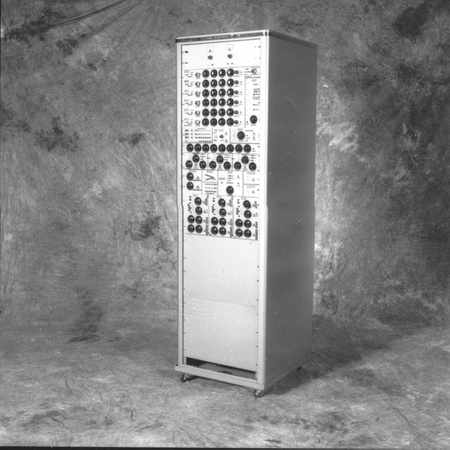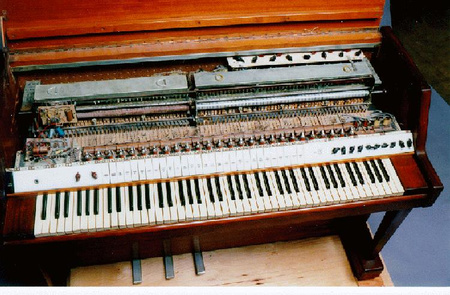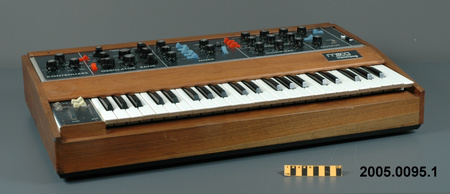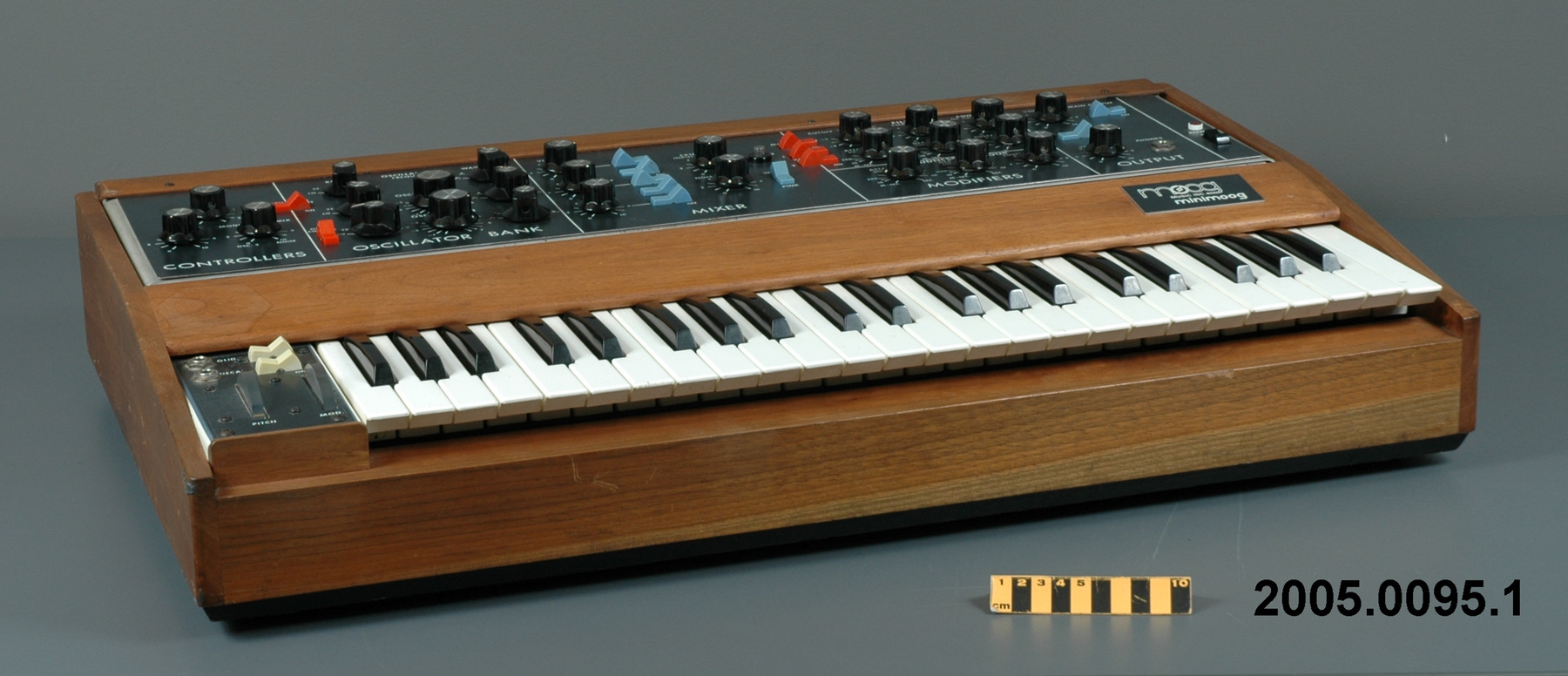Synthesizer
Use this image
Can I reuse this image without permission? Yes
Object images on the Ingenium Collection’s portal have the following Creative Commons license:
Copyright Ingenium / CC BY-NC-ND (Attribution-NonCommercial 4.0 International (CC BY-NC 4.0)
ATTRIBUTE THIS IMAGE
Ingenium,
2005.0095.001
Permalink:
Ingenium is releasing this image under the Creative Commons licensing framework, and encourages downloading and reuse for non-commercial purposes. Please acknowledge Ingenium and cite the artifact number.
DOWNLOAD IMAGEPURCHASE THIS IMAGE
This image is free for non-commercial use.
For commercial use, please consult our Reproduction Fees and contact us to purchase the image.
- OBJECT TYPE
- analog/monophonic/keyboard
- DATE
- 1971
- ARTIFACT NUMBER
- 2005.0095.001
- MANUFACTURER
- Moog Music Inc.
- MODEL
- Minimoog D
- LOCATION
- Williamsville, New York, United States of America
More Information
General Information
- Serial #
- N/A
- Part Number
- 1
- Total Parts
- 2
- AKA
- N/A
- Patents
- N/A
- General Description
- wood casing/ synthetic keys, control panels, controls, power cord, parts/ metal control unit casing, controls, wiring, parts/ wood feet (not original)
Dimensions
Note: These reflect the general size for storage and are not necessarily representative of the object's true dimensions.
- Length
- 71.8 cm
- Width
- 43.0 cm
- Height
- 14.5 cm
- Thickness
- N/A
- Weight
- N/A
- Diameter
- N/A
- Volume
- N/A
Lexicon
- Group
- Communications
- Category
- Music
- Sub-Category
- N/A
Manufacturer
- AKA
- Moog
- Country
- United States of America
- State/Province
- New York
- City
- Williamsville
Context
- Country
- Canada
- State/Province
- Unknown
- Period
- 1970's-1980's
- Canada
-
Part of a collection of electronic equipment for musical composition, performance and recording owned and used by Canadian Paul Hoffert, composer, musician, author, researcher, entrepreneur and arts administrator. American born, he came to Canada as a child and his career has encompassed many areas of the Canadian music business, including working as a jazz pianist, CBC music director and performer, educator, manufacturer of stereo equipment, music producer, and film composer. In the late 1960s he worked for a short time as a researcher in Hugh LeCaine's electronic music lab at NRC, where he wrote a computer program for music analysis and developed a solid-body electric violin. In 1968 Hoffert and rock drummer Skip Prokop, formed the very successful jazz-rock band Lighthouse (1969-1974, 1982, 1993-present), which earned one platinum record and four gold records and received three Juno awards between 1971 and 1973 In 1977 Hoffert received a Canadian Film Award (later known as a Genie) for best original musical score for the movie "Outrageous!". He also headed the Academy of Canadian Cinema and Television, the Guild of Canadian Film and Television Composers,and the Ontario Council for the Art. In 1995 he was inducted into the Canadian Rock and Roll Hall of Fame. In 2009 he was appointed a Member of the Order of Canada. - Function
-
An instrument which makes musical tones by electronic synthesis and plays these tones by means of a keyboard. - Technical
-
The Hoffert collection consists of approximately 25 pieces of electronic equipment for musical composition, performance and recording. These range from iconic keyboard instruments of the 1970s, to a variety of digital devices from the 1980s, to computer software from the early 1990s. These were used either for stage performances, especially during his years in the jazz rock band Lighthouse, or for work in his home studio. The Minimoog Model D has been called the first synthesizer ever to become a "classic." (Pinch & Trocco, p. 214) One of the first portable, keyboard synthesizers, the Model D was the only Minimoog put into production. Before 1970, synthesizers were generally massive, modular devices in which musicians programmed a huge range of sounds by using patch cords to connect the various modules (e.g. oscillators, amplifiers, filters, envelope generators) that generated and modified the electrical signal that drove the loudspeaker(s). These were essentially studio instruments, ill-suited to live performance and the itinerant life of a touring musician. Hugh LeCaine's Electronic Sackbut (1948) had been a more promising attempt at a performance instrument, but efforts to commercialize an updated prototype of the Electronic Sackbut in 1970-71 failed. Though not nearly as versatile as the "monster Moogs" of the late 1960s, the Minimoog incorporated a number of modules in a single cabinet, which the musician controlled with knobs, switches and wheels to make adjustments to the sound output in real time. By the time the Minimoog was introduced in 1971, the Moog brand name had already been lent a great deal of cachet by such recordings as Wendy Carlos' "Switched-On Bach" (1968) and Emerson Lake & Palmer's "Lucky Man" (1970). The Minimoog offered a compact, affordable means of emulating some of that distinct Moog sound, and it quickly became an icon of the 1970s progressive rock and jazz rock scenes. During its production life between 1970 and 1981 over 12,000 were made. Among the musicians who used Minimoogs were Keith Emerson, Jan Hammer, Rick Wakeman and Chick Corea. Paul Hoffert purchased his Minimoog around 1971 and used it in recording sessions for a number of film scores and commercials through the 1970s and early 1980s. Included with the instrument are the original travel case and the operating manual. Hoffert designed a stand for his Minimoog from black plastic ABS tubing. Though the stand no longer exists, the four wooden disks over which the top ends of the tubing were slotted are still found attached to the underside of the instrument. - Area Notes
-
Unknown
Details
- Markings
- black and incised lettering on back reads 'MINIMOOG SYNTHESIZER MODEL D SERIAL NO. 1482/ moog music, Inc., WILLIAMSVILLE, N.Y.'/ white lettering on black plate on front reads 'moog/ MUSIC INC./ minimoog'/ white lettering on control panels for control functions
- Missing
- unknown
- Finish
- brown stained and coated wood casing/ white and black keys/ charcoal coloured synthetic control panels with black synthetic and brushed metal control knobs/ blue, red, white, black synthetic switches/ brown power cord
- Decoration
- N/A
CITE THIS OBJECT
If you choose to share our information about this collection object, please cite:
Moog Music Inc., Synthesizer, circa 1971, Artifact no. 2005.0095, Ingenium – Canada’s Museums of Science and Innovation, http://collection.ingenium.ca/en/id/2005.0095.001/
FEEDBACK
Submit a question or comment about this artifact.
More Like This

